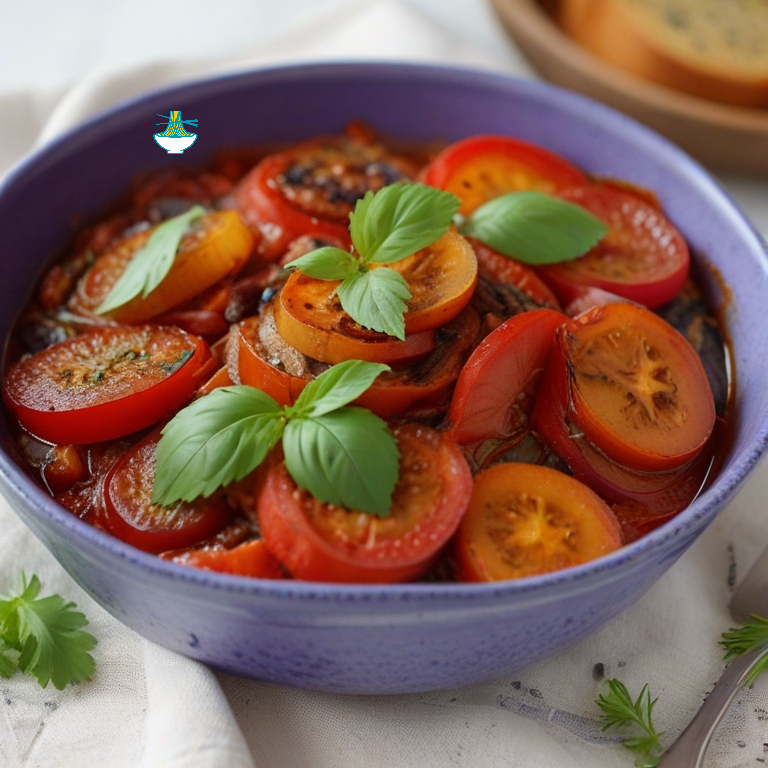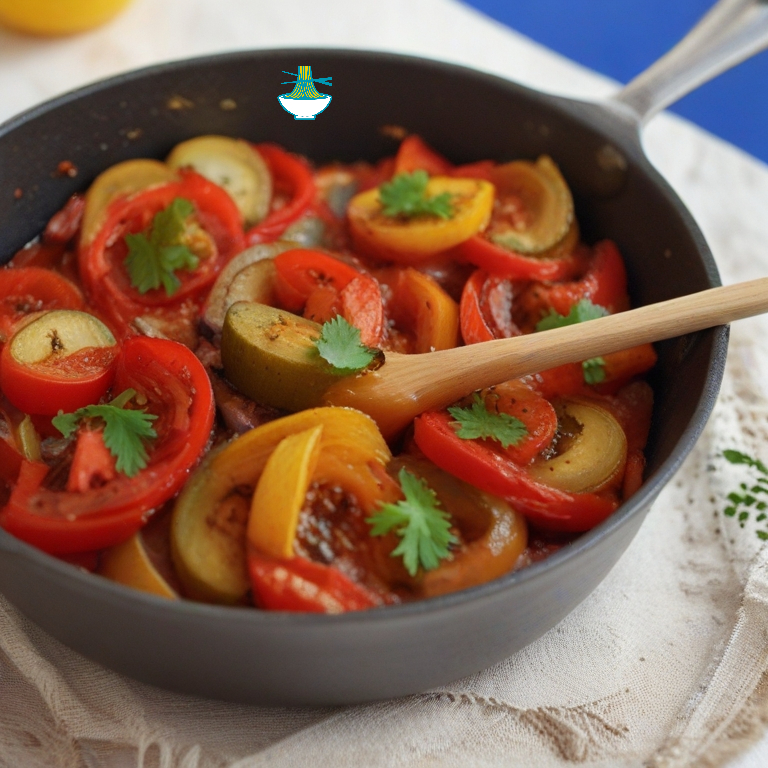Indulge in the rich flavors of Georgian cuisine with Ajapsandali, a delightful twist on the classic ratatouille. Bursting with vibrant colors and robust aromas, this traditional dish embodies the essence of Georgia's culinary heritage. Layers of tender eggplant, ripe tomatoes, bell peppers, and aromatic herbs come together in perfect harmony, creating a symphony of taste that will tantalize your palate. Served piping hot, Ajapsandali is not just a meal but a celebration of Georgia's rich agricultural bounty and cultural diversity. Experience the warmth and hospitality of Georgian cooking with every savory bite of this exquisite dish.
Ingredients:
- 2 large eggplants, diced
- 4 large tomatoes, diced
- 2 onions, finely chopped
- 2 bell peppers (any color), diced
- 3 cloves garlic, minced
- 1/4 cup vegetable oil
- 1 teaspoon ground coriander
- 1 teaspoon ground fenugreek (optional)
- 1 teaspoon ground cumin
- Salt and pepper to taste
- Fresh herbs (such as parsley or cilantro), chopped, for garnish

Instructions:
1- Heat the vegetable oil in a large skillet or pot over medium heat.
2- Add the chopped onions and cook until they are soft and translucent, about 5 minutes.
3- Add the minced garlic to the skillet and cook for another 1-2 minutes until fragrant.
4- Add the diced bell peppers to the skillet and cook for 5-7 minutes until they begin to soften.
5- Stir in the diced eggplants and cook for another 5-7 minutes until they start to soften.
6- Add the diced tomatoes to the skillet along with the ground coriander, ground fenugreek (if using), and ground cumin. Season with salt and pepper to taste.
7- Stir everything together, cover the skillet, and let the mixture simmer over low heat for 20-25 minutes, stirring occasionally, until all the vegetables are tender and the flavors have melded together.
8- Once cooked, remove the skillet from the heat and let the Ajapsandali cool slightly.
9- Garnish with chopped fresh herbs before serving.
10- Ajapsandali can be enjoyed warm or at room temperature, and it pairs well with crusty bread or rice.
Enjoy your delicious Georgia Ajapsandali!
Nutritional Values :
Eggplant (2 large eggplants, diced):
- Calories: 100 kcal
- Carbohydrates: 24 g
- Fiber: 12 g
- Protein: 4 g
- Fat: 0.4 g
benefits
- Rich in antioxidants, particularly nasunin which may protect cells from damage.
- High fiber content supports digestive health and may aid in weight management.
- Contains vitamins and minerals such as vitamin C, vitamin K, potassium, and manganese.
Tomatoes (4 large tomatoes, diced):
- Calories: 100 kcal
- Carbohydrates: 22 g
- Fiber: 6 g
- Protein: 5 g
- Fat: 1 g
benefits
- Excellent source of vitamin C, which boosts immune function and collagen production.
- High in lycopene, an antioxidant associated with reducing the risk of chronic diseases like heart disease and certain cancers.
- Rich in potassium, which helps regulate blood pressure and muscle function.
Onions (2 onions, finely chopped):
- Calories: 100 kcal
- Carbohydrates: 24 g
- Fiber: 4 g
- Protein: 2 g
- Fat: 0 g
benefits
- Contains antioxidants like quercetin, which may reduce inflammation and lower the risk of chronic diseases.
- Good source of prebiotic fibers that promote a healthy gut microbiome.
- Provides vitamins C and B6, as well as folate and potassium.
Bell Peppers (2 bell peppers, diced):
- Calories: 50 kcal
- Carbohydrates: 12 g
- Fiber: 4 g
- Protein: 2 g
- Fat: 0.5 g
benefits
- High in vitamin C, which supports immune function and collagen production for healthy skin.
- Contains antioxidants like beta-carotene, lutein, and zeaxanthin, which promote eye health.
- Good source of fiber and low in calories, making them beneficial for weight management.
Garlic (3 cloves):
- Calories: 15 kcal
- Carbohydrates: 3 g
- Fiber: 0.2 g
- Protein: 0.6 g
- Fat: 0 g
benefits
- Contains allicin, a compound with antibacterial and antiviral properties.
- May help lower blood pressure and cholesterol levels, reducing the risk of heart disease.
- Rich in manganese, vitamin B6, and vitamin C, which support various aspects of health.
Vegetable Oil (1/4 cup):
- Calories: 480 kcal
- Fat: 56 g
- No significant carbohydrates or protein content
benefits
- Provides essential fatty acids that are necessary for cell structure and function.
- Contains vitamin E, an antioxidant that protects cells from damage.
- May help improve cholesterol levels and reduce inflammation when consumed in moderation.
Nutritional values may vary slightly depending on factors such as the specific variety of the ingredients and cooking methods. Additionally, the nutritional information provided here is based on approximate values and may not be entirely accurate.


Comments